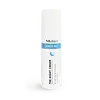What's inside
What's inside
 Key Ingredients
Key Ingredients

 Benefits
Benefits

 Concerns
Concerns

 Ingredients Side-by-side
Ingredients Side-by-side

Water
Skin ConditioningSqualane
EmollientGlycerin
HumectantHexyldecanol
EmollientPropanediol
SolventDimethyl Isosorbide
SolventHydroxyethyl Acrylate/Sodium Acryloyldimethyl Taurate Copolymer
Emulsion StabilisingHydroxyacetophenone
AntioxidantHydroxypinacolone Retinoate
Skin ConditioningRetinol
Skin ConditioningHelianthus Annuus Seed Oil
EmollientRosmarinus Officinalis Leaf Extract
AntimicrobialPelargonium Graveolens Flower Oil
MaskingAniba Rosodora Wood Oil
AstringentEucalyptus Globulus Leaf Oil
PerfumingSantalum Album Oil
MaskingOryza Sativa Bran Extract
Skin ConditioningHelianthus Annuus Extract
EmollientCupressus Sempervirens Oil
MaskingJuniperus Virginiana Oil
MaskingAbies Sibirica Oil
MaskingTocopherol
AntioxidantBeta-Glucan
Skin ConditioningCaprylyl Glycol
EmollientBHT
AntioxidantCeramide NP
Skin ConditioningCaprylic/Capric Triglyceride
MaskingCetyl Palmitate
Emollient1,2-Hexanediol
Skin ConditioningEthylhexylglycerin
Skin ConditioningPolysorbate 60
EmulsifyingTetrasodium Glutamate Diacetate
Hydroxystearic Acid
CleansingPolysorbate 20
EmulsifyingSorbitan Isostearate
EmulsifyingLaureth-23
CleansingTrideceth-6 Phosphate
EmulsifyingSodium Hydroxide
BufferingCitric Acid
BufferingPolyacrylate Crosspolymer-6
Emulsion StabilisingSodium Benzoate
MaskingBenzyl Alcohol
PerfumingLinalool
PerfumingWater, Squalane, Glycerin, Hexyldecanol, Propanediol, Dimethyl Isosorbide, Hydroxyethyl Acrylate/Sodium Acryloyldimethyl Taurate Copolymer, Hydroxyacetophenone, Hydroxypinacolone Retinoate, Retinol, Helianthus Annuus Seed Oil, Rosmarinus Officinalis Leaf Extract, Pelargonium Graveolens Flower Oil, Aniba Rosodora Wood Oil, Eucalyptus Globulus Leaf Oil, Santalum Album Oil, Oryza Sativa Bran Extract, Helianthus Annuus Extract, Cupressus Sempervirens Oil, Juniperus Virginiana Oil, Abies Sibirica Oil, Tocopherol, Beta-Glucan, Caprylyl Glycol, BHT, Ceramide NP, Caprylic/Capric Triglyceride, Cetyl Palmitate, 1,2-Hexanediol, Ethylhexylglycerin, Polysorbate 60, Tetrasodium Glutamate Diacetate, Hydroxystearic Acid, Polysorbate 20, Sorbitan Isostearate, Laureth-23, Trideceth-6 Phosphate, Sodium Hydroxide, Citric Acid, Polyacrylate Crosspolymer-6, Sodium Benzoate, Benzyl Alcohol, Linalool
Alternatives
Ingredients Explained
These ingredients are found in both products.
Ingredients higher up in an ingredient list are typically present in a larger amount.
BHT is a synthetic antioxidant and preservative.
As an antioxidant, it helps your body fight off free-radicals. Free-radicals are molecules that may damage your skin cells.
As a preservative, it is used to stabilize products and prevent them from degrading. Specifically, BHT prevents degradation from oxidation.
The concerns related to BHT come from oral studies; this ingredient is currently allowed for use by both the FDA and EU.
However, it was recently restricted for use in the UK as of April 2024.
Learn more about BHTGlycerin is already naturally found in your skin. It helps moisturize and protect your skin.
A study from 2016 found glycerin to be more effective as a humectant than AHAs and hyaluronic acid.
As a humectant, it helps the skin stay hydrated by pulling moisture to your skin. The low molecular weight of glycerin allows it to pull moisture into the deeper layers of your skin.
Hydrated skin improves your skin barrier; Your skin barrier helps protect against irritants and bacteria.
Glycerin has also been found to have antimicrobial and antiviral properties. Due to these properties, glycerin is often used in wound and burn treatments.
In cosmetics, glycerin is usually derived from plants such as soybean or palm. However, it can also be sourced from animals, such as tallow or animal fat.
This ingredient is organic, colorless, odorless, and non-toxic.
Glycerin is the name for this ingredient in American English. British English uses Glycerol/Glycerine.
Learn more about GlycerinSqualane is an emollient that helps the skin hold onto moisture. It's an oily liquid that occurs naturally in certain types of fish and plant oils.
Because squalane boosts hydration in the skin, it also comes with plenty of benefits: it is an antioxidant and can help fight free radicals and skin damage. Squalane is also found to have a detoxifying effect when applied.
Squalane comes from squalene, which occurs naturally within the sebum of our skin. It is one of the oils our skin produces to keep itself hydrated. Squalane is the hydrogenated version of squalene and has a longer shelf life.
Research shows that squalane is non-irritating (even at 100% concentration).
In general, it's a fantastic ingredient. It does a great job at hydrating the skin, and it's suitable for those with sensitive skin.
The source of squalane may impact malassezia / fungal acne. This is because olive oil derived squalane can contain impurities such as fatty acids and plant waxes. Sugarcane derived squalane is recommended for anyone with malassezia concerns.
Is squalane vegan?
This depends on the source. Squalane can be derived from both plants and animals. Most squalane used in skincare comes from plants.
Please note: the source of squalane is only known if disclosed by the brand. We recommend reaching out to the brand if you have any questions about their squalane.
Read more about squalene with an "e".
Is squalane an oil?
Squalane is often called an oil, but it’s technically not; it’s a hydrocarbon, meaning it’s only made of carbon and hydrogen, unlike true oils which are triglycerides made of fatty acids and glycerol.
The term “oil-free” isn’t regulated, so companies can define it however they want. Some exclude all oils, while others just avoid mineral oil or comedogenic oils.
While some people avoid oils thinking they cause breakouts, the right kind of oil (or oil-like ingredient like squalane) can actually help balance and hydrate your skin. It’s worth testing out simple oils or squalane to see what works best for your skin.
Learn more about SqualaneTocopherol (also known as Vitamin E) is a common antioxidant used to help protect the skin from free-radicals and strengthen the skin barrier. It's also fat soluble - this means our skin is great at absorbing it.
Vitamin E also helps keep your natural skin lipids healthy. Your lipid skin barrier naturally consists of lipids, ceramides, and fatty acids. Vitamin E offers extra protection for your skin’s lipid barrier, keeping your skin healthy and nourished.
Another benefit is a bit of UV protection. Vitamin E helps reduce the damage caused by UVB rays. (It should not replace your sunscreen). Combining it with Vitamin C can decrease sunburned cells and hyperpigmentation after UV exposure.
You might have noticed Vitamin E + C often paired together. This is because it is great at stabilizing Vitamin C. Using the two together helps increase the effectiveness of both ingredients.
There are often claims that Vitamin E can reduce/prevent scarring, but these claims haven't been confirmed by scientific research.
Learn more about Tocopherol